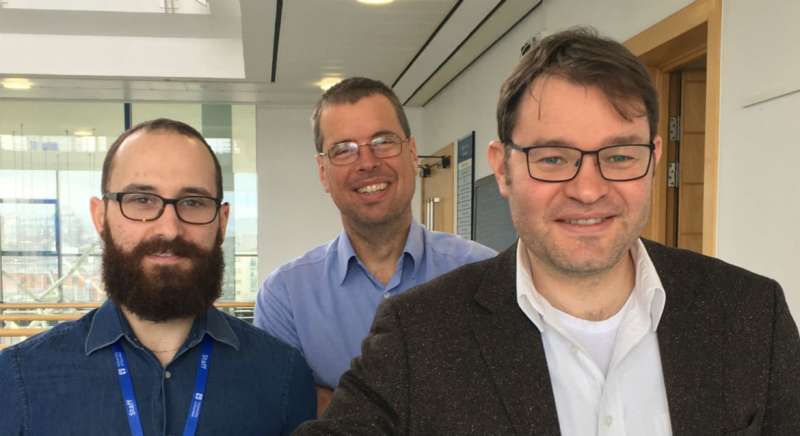Scientists solve structure of intellectual disability protein

Scientists at the University of Dundee have identified the effects of a mutation that gives rise to a form of intellectual disability.
intellectual disability is a type of developmental brain disorder in young patients which to date remains poorly understood and is incurable.
Researchers in the School of Life Sciences at Dundee focussed on mutations in the OGT gene, which plays a critical role in protecting brain cells against stress. In patients harbouring OGT mutations, this protective effect is lost.
In the new research, published in the journal Cell Chemical Biology, the team of Dundee scientists reveal that one of the intellectual disability mutations in OGT leads to a remarkable change in the structure of the enzyme that affects its function.
"Solving the structure and workings of this mutant form of OGT gives us crucial insights in to how it stops working properly and gives rise to intellectual disability," said Professor Daan van Aalten, a Wellcome Trust Investigator in the Division of Gene Regulation and Expression in the School of Life Sciences, who co-led the research team with Dr Ulrich Zachariae.
"This study provides the first insights into how mutations in the OGT gene recently identified in young intellectual disability patients interrupt the function of the enzyme. This knowledge could form a foundation for the development of new drugs that may `rescue' the function of the OGT enzyme to the benefit of the young patients suffering from this disease."
Dr Zachariae, Principal Investigator in the Division of Computational Biology in the School of Life Sciences, said, "It was particularly fascinating to see how a single point mutation leads to a massive change in the overall structure and dynamics of this enzyme."
The research team have been working for several years to piece together the structure of the mutated form of the enzyme and understanding the effects the mutation causes. There is further work to do as the mechanisms of what the enzyme does once it has been mutated are not yet fully understood.
Very recent advances in genetics have identified mutations in the OGT gene in patients with inherited forms of intellectual disability in families in the US, Europe and recently also in Scotland.
Professor van Aalten said, "This is a good example of collaborative research resulting from scientists with different expertise working together, supported by excellent PhD students and postdoctoral researchers. As is often the case, having now solved this important problem, there are many new interesting questions on OGT that will direct our future research."
Dr Zachariae added, "This example goes on to show that research that straddles the boundaries of traditional disciplines can serve to tackle some of the most important current scientific questions."
More information: Mehmet Gundogdu et al. The O -GlcNAc Transferase Intellectual Disability Mutation L254F Distorts the TPR Helix, Cell Chemical Biology (2018). DOI: 10.1016/j.chembiol.2018.03.004
Journal information: Cell Chemical Biology
Provided by University of Dundee



















